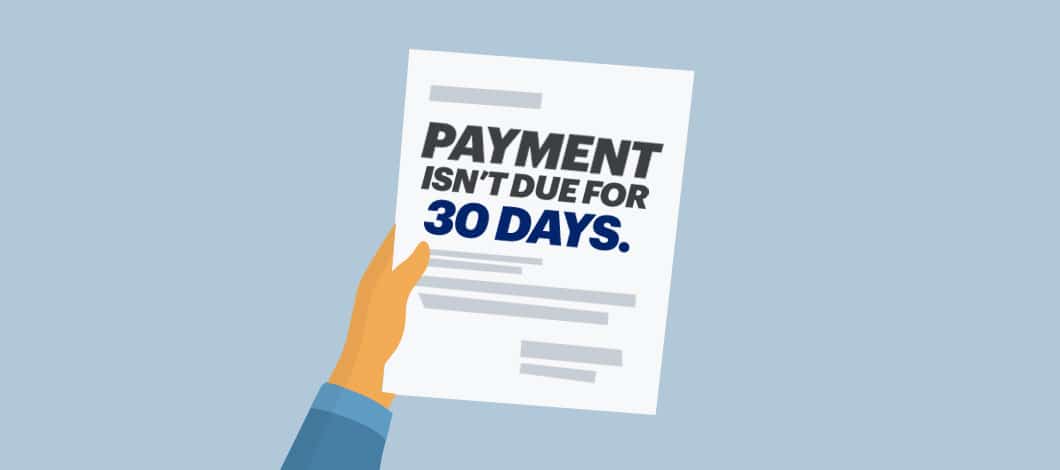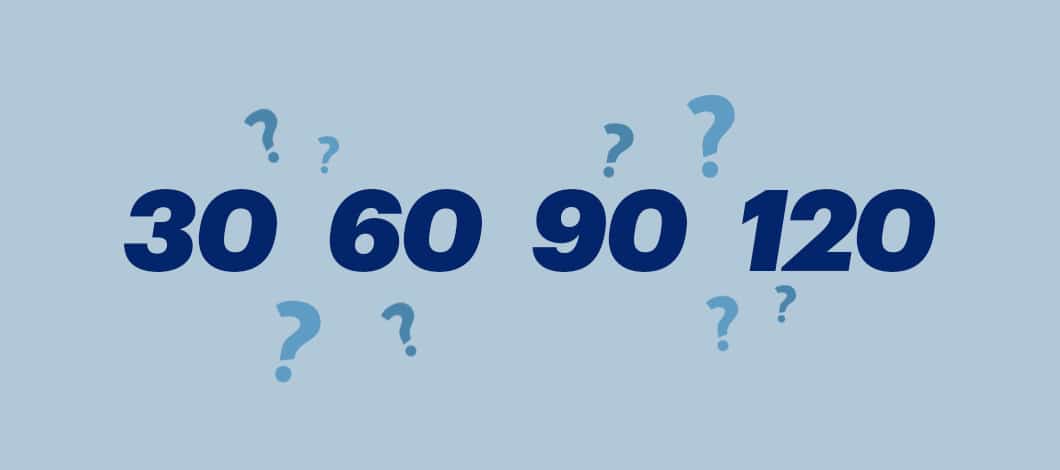Net payment terms can help you make more sales, but they carry some cash-flow risks. Learn how and when to use net terms effectively.
We’ll cover the basics of what net terms are before sharing some best practices when using them. We also will review the different types of net term arrangements available, the pros and cons of using them, when it makes sense to offer net payment terms and what alternatives you can use.
What Are Net Terms?
A net term arrangement is a billing method where payment isn’t due immediately but becomes due at the end of a designated time frame, known as the net term. The length of the term is designated by a number representing how many days are allowed before payment becomes due.
Under net 30 payment terms, for example, payment isn’t due for 30 days.

What Are Some Common Arrangements?
Net payment term arrangements vary based on:
- When the start of the term begins
- How many days elapse before the term ends
- Whether there is an early-payment discount incentive
Each of these factors can vary in multiple ways. Because of these possible variations, exact terms should be spelled out in contractual agreements. Here are some of the most common variations.
Starting Point Options
The start of net payment terms can be counted in a number of different ways:
- When net payment is dated from delivery, the term begins upon delivery of goods or services
- When net payment is measured from the sale date, the term begins at the time the sale is completed
- With invoice net terms, the term begins upon invoicing
Measuring net terms from delivery allows the longest amount of time before payment becomes due. Options are selected based on factors such as industry standards, how quickly the seller needs to recover their cash and how long the seller wants to give the buyer to repay what they owe.
Length Options
Whether measured from delivery, sale or invoicing, net terms are distinguished by how long their terms allow before payment becomes due. Term lengths are defined by the number of days before the term becomes due.
Examples include:
- Net 7 payment terms
- Net 10 payment terms
- Net 15 payment terms
- Net 21 payment terms
- Net 30 payment terms
- Net 60 payment terms
- Net 90 payment terms
- Net 120 payment terms
- Net 180 payment terms
- Net 365 payment terms
Terms vary by industry and company. Net 30, 60 and 90 are the most common.
Early Payment Discounts
Some net payment arrangements offer early payment discounts as incentives. This can be expressed using a fraction which represents the percentage discount a customer receives for an early payment within a certain number of days.
For example, 2/10 net 30 indicates a 2% discount for paying within 10 days on a net 30 agreement.
Why Do Some Businesses Use Net Payment Terms?
Net payment terms appeal to suppliers because they allow businesses to extend credit to clients who might not qualify otherwise. This increases sales.
What Are the Pros and Cons?
Net payment terms offer advantages to both suppliers and their customers:
- Net payment terms can be easier to qualify for than other forms of financing, so that customers who normally would struggle to qualify for financing can obtain credit under net payment terms
- Customers can obtain goods and services immediately when they need them rather than waiting until they obtain sufficient cash on hand
- Customers don’t have to worry as much about the strain on their cash flow
- Suppliers can extend credit without adding the processing fees associated with credit card payments
- Lowered financing barriers and lower fees combine to make customers more likely to buy
- Favorable financing creates goodwill between customers and suppliers, building long-term relationships which promote repeat business
These benefits represent some of the biggest pros.
Cons of Net Payment Terms
The biggest disadvantage is that you have to wait longer to get paid. This can slow down your cash flow — even if your customers pay on time.
If your customers are late, it can become an even bigger impediment to your cash flow. Unfortunately, some clients take advantage of the terms by paying late.
You can take steps to mitigate these risks. A careful financing plan based on accurate financial forecasts can help you determine how many days you can afford to wait for customers to pay you. Shortening your payment terms to something more manageable then can let you avoid cash-flow issues.
If you’re concerned about late payments, using stricter screening of qualifying criteria such as credit scores can help you screen out customers who pose delinquency risks. Another safeguard is restricting net 30 agreements to preferred customers with an established payment history with your company. Better billing and collection policies such as automated invoicing, early payment incentives and late payment penalties can help you discourage late payments.
However, note that early payment incentives can lower your revenue if enough customers take advantage of them. This makes doing a cost-benefit analysis important.

When Does It Make Sense to Offer Net Payment Terms?
Whether they make financial sense for your business depends largely on your cash flow. If your cash flow allows you to extend net payment arrangements to some of your clients without hurting your ability to cover your operational expenses, you can increase your client base and sales. However, this is only feasible if it doesn’t impose an undue burden on your finances.
The number of clients you have also is a factor. If you only have a handful of clients, they can have a bigger impact on your cash flow than if payment delays are spread out over many accounts.
What Are Some Alternatives?
If you find that a standard net payment arrangement such as net 30 isn’t feasible for your business model, one alternative is to offer shorter terms. For example, net 7 or net 15 terms may allow you to extend credit without compromising your cash flow.
On the other hand, if you have exceptionally strong cash reserves, you can take the opposite approach of allowing longer terms. This may allow you to attract more clients and generate more sales.
Another alternative is to offer your customers a different financing option. For example, for industries with certain business models, you might consider accounts receivable financing, which allows you to extend customers credit based on the strength of using their unpaid invoices as collateral.
Another option is to offset cash-flow issues by developing an alternative source of financing for your own business. For example, a business line of credit can provide you with cash reserves in the event you need to wait for cash to come in on invoices extended under net payment terms.
Consider Whether They Fit Your Financing Strategy
Net payment terms allow your customers to delay payment, a form of credit extension which can promote higher sales. These arrangements are distinguished based on when terms begin and how long they last before payment becomes due.
These terms can allow you to extend credit to more customers, generating more sales and promoting repeat business. However, extending terms longer than you can cover risks slowing down your cash flow. A successful policy requires sound financial planning, including accurate cash-flow and expenses projections and a solid financing strategy.
Fast Capital 360 helps support your financing strategy by pairing you with lenders who meet your qualifying criteria. To find out what loans you may prequalify for with no obligation, take a few minutes to fill out our free form and see your loan options.










